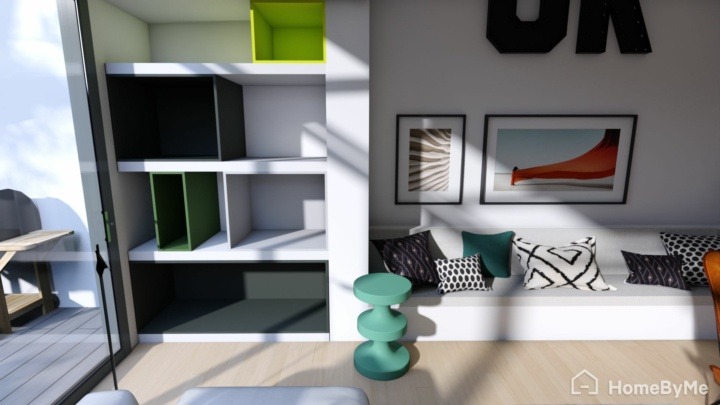Kitchen Retailers December 3, 2021
How kitchen retailers can use a 3D planning solution to optimize product end-of-life strategies

A 3D planning solution can be used to help identify products near end of life, clear inventories, and maintain margins.
Kitchen retailers can make their stores and chains more profitable by optimizing their strategies in alignment with the four key stages of a product’s life cycle – introduction, growth, maturity, and end of life. Any kitchen retailer knows that all good things must come to an end: no matter how popular the product, it eventually loses currency with the audience. New products often capture the consumer’s imagination, regulations have evolved, or technologies have moved on.
As such, kitchen retailers must give as much attention to a product nearing end of life as in the growth stage. This phase must be identified early, adapting stocks, new product introductions and marketing strategies in advance to ensure they do not overstock shelves with merchandise they will eventually need to discount.
An online interactive consumer platform in the form of a 3D planning solution, such as HomeByMe for Kitchen Retailers, can be used to significantly optimize the profitability of products nearing end of life. As well as an accelerated sales cycle, the platform provides a complete picture of customers’ purchase journeys, which can be used to provide a better understanding of buying behaviors and preferences. What’s more, the platform provides a rich source of data from users’ online planning habits, which can be analyzed to better predict future trends, forecast demand and merchandise accordingly. Historical sales data is great, but paying attention to upcoming trends will ensure retailers can effectively plan for end of life.
This article outlines three of the most effective ways by which this can be done:
- Early warning system to identify products losing popularity with customers
- Identification of replacement products
- Development of appropriate promotional or discounting strategies
Using a 3D planning solution to identify products nearing end of life
Sales numbers are the most reliable indicator of whether a product is nearing end of life. However, relying on them to determine stocking strategies – especially in the context of fast-moving fads that rise and fall at web speed – can cause a lag, leading to dead inventory on the shelves. Offering too many products is not optimal, even for companies with a direct sales force. Sales professionals put their energy into the products that are easiest to sell and that have the highest payback, leaving products that do not fit into this category largely ignored.
A 3D planning solution can be used as an effective indicator of ‘intent to buy’. Populated with the entire product catalog, a 3D planning solution allows consumers to furnish their kitchens with the designs, collections, and products that best fit their preferences. In order to minimize risk, consumers can create high-quality 3D renders that give them a near-real life view of how their dream designs might look. The platform allows these designs to be shared among friends, via social media or even be brought into store for consultation with sales experts.
Aggregate data from the 3D planning solution can be analyzed on a systematic basis to identify trends in the popularity of specific products and collections. This can help inform promotional, inventory, and marketing strategies based on advance evidence of consumer intentions — and not just gut-feel.
Replacing end-of-life products with the latest trends
Retiring a product or collection is not just about removing it from offer. It also needs to be replaced by a suitable product in the introduction or maturity phases.
Data generated by the 3D planning solution can be analyzed to understand what consumers are using as a replacement for products that are nearing the end of their life cycles. For example, if glass countertops are no longer being used in kitchen plans, planners can dive deeper to understand what countertops are being preferred on consumers’ plans, for example.
Analytics over time can yield even more valuable insights for kitchen retailers, helping them to identify broader consumer shifts, such as the rate of uptake of smart kitchen appliances.
Determining the most appropriate marketing and discounting strategies
A 3D planning solution such as HomeByMe for Kitchen Retails provides a convenient and effective platform for kitchen retailers to test and roll out promotional and discounting strategies for end-of-life products. For example, they can gauge consumers’ responses to pricing updates in near-real-time and even conduct A/B testing on discounting and promotional strategies to identify appropriate end-of-life pricing models.
With the HomeByMe for Kitchen Retailers 3D planning solution, retailers can see exactly what products their customers have incorporated into their designs, regardless of whether those purchases were completed or not. This can inform a number of end-of-life strategies. By integrating the platform with their CRM systems, kitchen retailers can develop marketing campaigns to re-engage consumers who abandoned purchases and promote their chosen products with attractive offers if they are nearing end of life. Alternatively, marketing campaigns can flag similar products if a product has been totally discontinued and alert users to end-of-life products that may feature in their earlier projects and designs.
Conclusion
With margins tight, kitchen retailers simply cannot afford to overlook products entering the end of their retail shelf life. By fully leveraging the customer data that their 3D planning solution generates, retailers can implement end-to-end strategies to ensure a product generates optimal margins and revenues at every stage of its lifecycle – including end of life.


